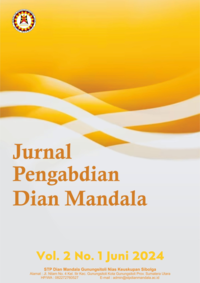Analisis Biomekanika Gerakan Atlet Renang untuk Optimalisasi Latihan
DOI:
https://doi.org/10.62200/jpdm.v3i1.224Keywords:
Biomechanics, Body Angles, Drag Coefficient, Freestyle Swimming, Propulsion ForceAbstract
This study aims to analyze the effect of body angle variations on propulsion force, drag coefficient, and freestyle swimming performance using a biomechanical approach. The background of the study is based on the importance of movement efficiency in swimming which greatly affects athlete performance. The research method used a quantitative experimental design involving university or club level swimmers who have a minimum of three years of training experience. Subjects were selected through purposive sampling with the criteria of being healthy, accustomed to using freestyle techniques, and willing to follow the research procedure. The instruments used included 3D motion capture to record body angles and movement coordination, force sensors to measure propulsion force and drag coefficient, and a time recording system to calculate average speed. The research procedure was carried out by providing variations in body angles of 0°, 15°, and 30°, each with three replications. The data obtained were analyzed using descriptive statistics to describe the average, standard deviation, and data distribution, as well as comparative statistics (ANOVA or paired t-test) to compare performance between angle variations. The results showed that a 15° body angle provided optimal performance, characterized by increased average speed and propulsive efficiency compared to 0° and 30° body angles. These findings confirm that body angle regulation is a key factor in reducing water resistance and increasing propulsive effectiveness. The discussion of the results indicates that applying biomechanical analysis to swimming training can provide objective information for developing training techniques and strategies. Therefore, this study concludes that a 15° body angle is the most ideal position for improving freestyle swimming performance. Further research is recommended to expand the number of subjects, explore variations in other swimming styles, and integrate physiological data to obtain a more comprehensive picture.
References
Amara, S., Barbosa, T. M., Negra, Y., Hammami, R., Khalifa, R., & Chortane, S. G. (2021). The effect of concurrent resistance training on upper body strength, sprint swimming performance and kinematics in competitive adolescent swimmers: A randomized controlled trial. International Journal of Environmental Research and Public Health, 18(19), 10261. https://doi.org/10.3390/ijerph181910261
Argantos, A., Indrayani, T. I., & Khairoh, J. (2025). The effect of dryland training using the circuit training method on 50-meter breaststroke swimming speed in Padang City swimmers. Annals of Applied Sport Science, 13(Special Issue), 205–208. https://www.scopus.com/inward/record.uri?eid=2-s2.0-105005730924
Cantarelli Rodrigues, T., Morais, A. Q. D., Godoy, I. R. B., & Serfaty, A. (2025). Aquatic sports injuries: Biomechanics, injury patterns, and imaging in swimming, water polo, and diving. Seminars in Musculoskeletal Radiology, 29(4), 513–529. https://doi.org/10.1055/s-0045-1808279
Demarie, S., Guidotti, F., Pizzuti, A., & Capranica, L. (2023). Analysis of the 800-m freestyle competition across age groups: Recommendations for master swimmers' performance. Medicina dello Sport, 76(4), 457–469. https://doi.org/10.23736/S0025-7826.23.04375-2
Hung, T. M., Hai, P. T., & Quan, P. Q. M. (2025). Application of selected speed development exercises for the national swimming team at Danang National Sports Training Center. Journal of Physical Education and Sport, 25(6), 1271–1280. https://doi.org/10.7752/jpes.2025.06142
Huo, X. (2024). Optimizing physical education movements through biomechanical analysis: A new approach to reducing the risk of sports injuries. MCB Molecular and Cellular Biomechanics, 21(4), Article 502. https://doi.org/10.62617/mcb502
Kuhn, J., & Legerlotz, K. (2022). Ankle joint flexibility affects undulatory underwater swimming speed. Frontiers in Sports and Active Living, 4, 948034. https://doi.org/10.3389/fspor.2022.948034
Pradittakarn, W., Nongkhai, M. P. N., Sulaiman, R. S. T., Anan, T. R., & Kumar, R. (2025). The effect of speed, agility, and quickness training on backstroke performance in 12–15-year-old students. Journal of Physical Education and Sport, 25(2), 382–391. https://doi.org/10.7752/jpes.2025.02043
Ribeiro, J., Figueiredo, P., Morais, S., Alves, F., Toussaint, H., Vilas-Boas, J. P., & Fernandes, R. J. (2017). Biomechanics, energetics and coordination during extreme swimming intensity: Effect of performance level. Journal of Sports Sciences, 35(16), 1614–1621. https://doi.org/10.1080/02640414.2016.1227079
Schaffert, N., Engel, A., Schlüter, S., & Mattes, K. (2019). The sound of the underwater dolphin-kick: Developing real-time audio feedback in swimming. Displays, 59, 53–62. https://doi.org/10.1016/j.displa.2019.08.001
Takagi, H., Nakashima, M., Sengoku, Y., Tsunokawa, T., Koga, D., Narita, K., Kudo, S., Sanders, R., & Gonjo, T. (2023). How do swimmers control their front crawl swimming velocity? Current knowledge and gaps from hydrodynamic perspectives. Sports Biomechanics, 22(12), 1552–1571. https://doi.org/10.1080/14763141.2021.1959946
Trindade, C. D. Z., Schneider, C. D., Benitez-Flores, S., & Castro, F. A. S. (2024). Factors influencing master swimming performance: A multivariate analysis of the 200 m front crawl. Journal of Physical Education and Sport, 24(2), 374–381. https://doi.org/10.7752/jpes.2024.02045
Van Houwelingen, J., Schreven, S., Smeets, J. B. J., Clercx, H. J. H., & Beek, P. J. (2017). Effective propulsion in swimming: Grasping the hydrodynamics of hand and arm movements. Journal of Applied Biomechanics, 33(1), 87–100. https://doi.org/10.1123/jab.2016-0064
Xu, Y., Sun, D., Li, S., & Gu, Y. (2023). Progress of swimming dynamic research from a hydromechanical perspective. Chinese Journal of Applied Mechanics, 40(2), 459–473. https://doi.org/10.11776/j.issn.1000-4939.2023.02.024
Yu, X., Chen, M., Zhang, G., & Li, W. J. (2024). Comprehensive analysis of motion performance through integrated lower limb kinematic and kinetic parameters. In 2024 IEEE International Conference on Robotics and Biomimetics (ROBIO) (pp. 851–855). IEEE. https://doi.org/10.1109/ROBIO64047.2024.10907544
Zamparo, P., & Bonifazi, M. (2014). Bioenergetics of cyclic sport activities in water: Swimming, rowing and kayaking. In Nutrition and enhanced sports performance: Muscle building, endurance, and strength (pp. 143–150). Academic Press. https://doi.org/10.1016/B978-0-12-396454-0.00014-X
Zamparo, P., & Bonifazi, M. (2018). Bioenergetics of cyclic sport activities in water: Swimming, rowing, and kayaking. In Nutrition and enhanced sports performance: Muscle building, endurance, and strength (pp. 141–149). Academic Press. https://doi.org/10.1016/B978-0-12-813922-6.00012-6
Downloads
Published
How to Cite
Issue
Section
License
Copyright (c) 2025 Jurnal Pengabdian Dian Mandala

This work is licensed under a Creative Commons Attribution-ShareAlike 4.0 International License.










